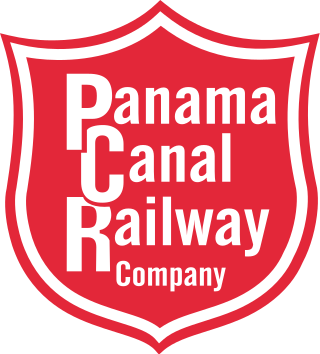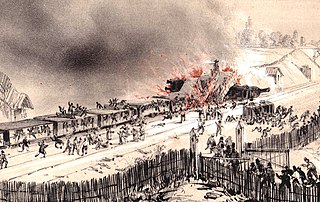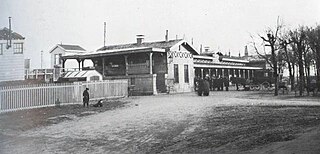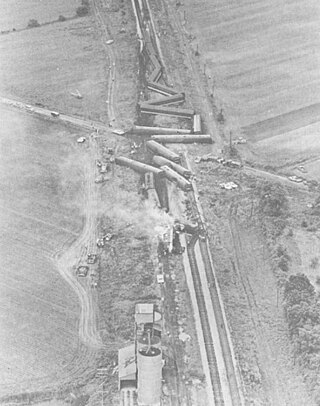
The Panama Canal Railway is a railway line linking the Atlantic Ocean to the Pacific Ocean in Central America. The route stretches 47.6 miles (76.6 km) across the Isthmus of Panama from Colón (Atlantic) to Balboa. Because of the difficult physical conditions of the route and state of technology, the construction was renowned as an international engineering achievement, one that cost US$8 million and the lives of an estimated 5,000 to 10,000 workers. Opened in 1855, the railway preceded the Panama Canal by half a century; the railway was vital in assisting the construction of the canal in the early 1900s. With the opening of the canal, the railroad's route was changed as a result of the creation of Gatun Lake, which flooded part of the original route. Following World War II, the railroad's importance declined and much of it fell into a state of neglect until 1998, when a project to rebuild the railroad to haul intermodal traffic began; the new railroad opened in 2001.
The railways of New South Wales, Australia have had many incidents and accidents since their formation in 1831. There are close to 1000 names associated with rail-related deaths in NSW on the walls of the Australian Railway Monument in Werris Creek. Those killed were all employees of various NSW railways. The details below include deaths of employees and the general public.

On 8 May 1842, a train crashed in the cutting between Meudon and Bellevue stations on the railway between Versailles and Paris, France. The train was travelling to Paris when it derailed after the leading locomotive broke an axle, and the carriages behind piled into it and caught fire. It was the first French railway disaster and the deadliest in the world at the time, causing between 52 and 200 deaths, including that of explorer Jules Dumont d'Urville. The derailment led the French to abandon the practice of locking passengers in their carriages.

On 10 August, 1856 two passenger trains collided at the Amsterdam–Haarlem–Rotterdam railway near Delfshaven between Schiedam Centrum station and Rotterdam Centraal station, the Netherlands. Two carriages where destroyed with a third being severely damaged. Three passengers lost their lives and at least nine were injured.

The 1971 Salem, Illinois derailment occurred on June 10, 1971, when Amtrak’s City of New Orleans passenger train derailed near Salem, Illinois. It is sometimes referred to as the Tontiderailment, after the unincorporated community of Tonti, Illinois, which was the site of the crash. An investigation by the National Transportation Safety Board (NTSB) found that the derailment was caused by a false flange on a flat wheel caused by a seized axle bearing. The crash killed 11 people and injured 163. It was Amtrak's first fatal accident since assuming control of most intercity passenger trains in the United States on May 1, 1971.

On 9 September 1926, a passenger train was derailed near Voorschoten, Netherlands due to defective track. Four people were killed and 30 were injured.
The 1874 Warmond train accident was a train collision between a passenger train and a freight train at the Amsterdam–Haarlem–Rotterdam railway near Warmond railway station between Leiden and Warmond, in the Netherlands on 14 August 1874. A passenger and one of the drivers were killed, and over 30 passengers were injured. The wife of the train driver died of shock after hearing her husband was killed.
On 4 October 1965, during the Apartheid in South Africa, a passenger train of the South African Railways with up to 1500 black commuters onboard derailed, killing 87 of them.





